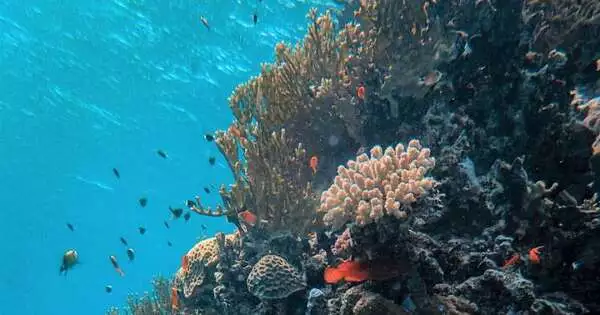Oceans play an important role in mitigating climate change, but at a cost. New research backed by ESA and utilizing numerous satellite measurements of various elements of saltwater as well as readings from ships has revealed how our ocean waters have become more acidic over the last three decades—which is having a negative impact on marine life.
Oceans not only absorb approximately 90% of the extra heat in the atmosphere caused by greenhouse gas emissions from human activities such as the combustion of fossil fuels, but they also absorb approximately 30% of the carbon dioxide we pour into the atmosphere. While this appears to be a beneficial thing, these activities are increasing the acidity of saltwater.
Reduced seawater pH, also known as ocean acidification, reduces the carbonate ions required by calcifying organisms such as shellfish and corals to build and maintain their hard shells, skeletons, and other calcium carbonate structures. If the pH of the ocean becomes too low, shells and skeletons can begin to dissolve.
While this has catastrophic consequences for specific types of marine life, it also has the potential to harm the marine environment as a whole. The pteropod, or sea butterfly, for example, is being harmed by ocean acidification because changes in seawater pH can destroy their shells. They may be small sea snails, but they provide vital food for organisms ranging from tiny krill to massive whales.
There are also far-reaching ramifications for all of us because the health of our oceans is crucial for climate regulation, aquaculture and food security, tourism, and more.
Monitoring changes in ocean acidification is so critical for climate and environmental policymaking, as well as understanding the ramifications for marine life.
The pH of seawater can be measured by ships, but the results are infrequent and difficult to use to track change. Variations in marine carbonate chemistry, on the other hand, appear to be closely tied to variations in temperature, salinity, chlorophyll concentration, and other variables, many of which can be monitored by satellites with near-global coverage.
In a recent report published in Earth System Science Data, scientists working on the OceanSODA project used observations from ships and satellites to reveal how ocean waters have become more acidic over the previous three decades.
From what Luke Gregor, co-author of the paper and researcher at ETH Zurich’s Institute of Biogeochemistry and Pollutant Dynamics, explained, “We used in-situ and satellite measurements of sea-surface temperature, salinity, and chlorophyll to calculate changes in surface-ocean alkalinity and carbon dioxide concentrations, from which pH, calcium carbonate saturation state, and other ocean acidification properties can be calculated.”
“We applied machine learning to capture the intricate link between changes in these variables and oceanic carbon.
From 1985 to 2018, we had one of the first global-scale observation-based perspectives of the surface-ocean carbonate system. The findings reveal that the ocean’s acidity is steadily increasing as it absorbs more carbon dioxide from the atmosphere. Along with increased ocean acidification, there is a decline in the availability of carbonate ion concentration, making it more difficult for animals to develop shells and skeletons.
“This provided us with one of the first global-scale observation-based views of the surface-ocean carbonate system from 1985 to 2018. The results show a strong and gradual increase in the acidity of the ocean as it continues to absorb atmospheric carbon dioxide. Along with the increase in the ocean’s acidification, there is an associated decrease in the availability of the carbonate ion concentration, making it harder for organisms to grow their shells and skeletons. “
The team used a variety of satellite data, including sea-surface temperature data from the Copernicus Sentinel-3 satellites’ Sea and Land Surface Temperature Radiometer and the Advanced Very High Resolution Radiometer carried by Europe’s MetOp satellites and the US National Oceanic and Atmospheric Administration’s POES satellites. This data set was obtained through the ESA’s Climate Change Initiative.
The data on chlorophyll came from a multi-sensor blended dataset obtained by ESA’s GlobColour project, which included data from the Ocean and Land Colour Instruments aboard Copernicus Sentinel-3 satellites.
Soda3, a climate reanalysis dataset, was used to obtain information on ocean salinity.
As Dr. Gregory pointed out, “With this richness of satellite data, we can truly understand what has happened to our huge oceans over the previous 30 years.” Furthermore, we must continue to employ satellite data to monitor the oceans in order to better understand the resilience and sensitivity of coral reefs and other marine creatures to the mounting concerns of ocean acidification. “





